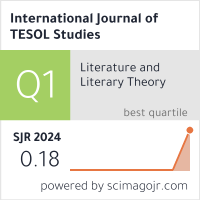2632-6779 (Print)
2633-6898 (Online)


Scopus
Ulrich’s Periodicals Directory (ProQuest)
MLA International Bibliography
MLA Directory of Periodicals
Directory of Open Access Journals (DOAJ)
QOAM (Quality Open Access Market)
British National Bibliography
WAC Clearinghouse Journal Listings
EBSCO Education
ICI Journals Master List
ERIH PLUS
CNKI Scholar
Gale-Cengage
WorldCat
Crossref
Baidu Scholar
British Library
J-Gate
ROAD
BASE
Publons
Google Scholar
Semantic Scholar
ORE Directory
TIRF
China National Center for Philosophy and Social Sciences Documentation
Sonia W. L. Cheung
The University of Hong Kong, Hong Kong, China
Abstract
Despite the prevalence of exam-focused textbooks and practice tests, few studies have examined how students react to their input. A listener may need to reach a certain proficiency level to be able to benefit from the input and listening practice. Given the importance of L2 vocabulary knowledge for listening comprehension, this study used multiple methods to investigate the relationship between lexical threshold and listening comprehension. A vocabulary level test was designed to measure whether the participants knew 2000 high frequency words in English. Four classes of 73 secondary students in Grade 11 in Hong Kong responded to four listening tasks during their end of term examination. Cluster analysis was used to group students on the basis of their listening proficiency. Three profiles of students were identified to infer what they could comprehend based on the amount of lexical knowledge they had. Clear trends emerged in terms of listening fluency. Students in the cluster with high listening scores reached or approached the lexical threshold. They displayed an ability to identify main ideas and specific details, taking notes fluently. The borderline group showed readiness for comprehension when listening support was provided. The third group showed low achievement in English learning largely unable to grasp key words. The paper discusses the challenges faced by students in listening comprehension with reference to lexical threshold. Implications for curriculum design and materials development are discussed.
Keywords
Listening fluency, vocabulary knowledge, needs analysis, practice tests, Chinese learners